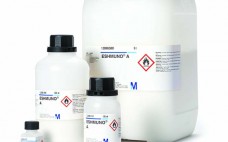In this month’s lineup, you’ll find a common theme of balancing operating costs against company cultures and corporate philosophies. This is far from new: You can’t responsibly run a business without making such calculations! But the value in taking a fresh look at them lies in how we are forced to dust off and reassess some assumptions (even prejudices). It is easy (and all too human) to persist with outmoded assumptions — and we cannot afford to do that given…
Friday, February 6, 2015 Daily Archives
Spotlight February 2015
Niche-Disease: Amyloidosis by Cheryl Scott Amyloidosis is a family of rare diseases involving a build- up of misfolded (and thus insoluble) amyloid protein in one or more organs. The condition affects different organs in different people, involving different types of amyloid protein. It most frequently affects the heart, kidneys, liver, spleen, nervous system, and digestive tract. Severe amyloidosis can cause life-threatening organ failure, and there is no cure. Some 60 amyloid proteins have been identified, with about half of them…
30 Years of Upstream Productivity Improvements
We recently completed an analysis of the past 30 years of industry progress in commercial-scale expression titers and bioprocessing yields. These basic measures of biopharmaceutical manufacturing efficiency also benchmark the technological progress made in bioprocessing over recent decades. Titer and yield improvements generally indicate related bioprocessing cost savings, something most commercial-scale manufacturers work to improve. This focus on efficiency and productivity has led to constant bioprocessing improvements even for long-approved and -marketed products. Our findings indicate that although upstream titers…
A Case for Biopharmaceutical Operations in Low-Cost Countries to Maximize Return on Investment
A company’s success is associated with its growth. An expanding company hires more employees (full-time equivalents, FTEs) to support its commercial products, to develop new products, and to provide administrative services. As it grows, an organization can become more complex and its operations less efficient. Analysis of 2013 financial data showed that revenue of US biopharmaceutical companies increases with a growing number of FTEs at a slower rate than does cost (1). That study assumed that all US biopharmaceutical companies…
Special Report: The Path to Vaccine Profitability
Managing vaccine supply chain improvements involves a complex interaction of laboratories, other facilities, CMOs, and suppliers. Since the business of making vaccines became a commercial proposition, profitability has often been elusive. The economics are difficult: Costs of development and production, already high, are rising. Profit margins historically have been lower than those of other pharmaceutical products, in part because of the complexities of manufacturing and distributing vaccines as well as their stringent safety, testing, and quality requirements.
Affinity Capture of F(ab’)2 Fragments: Using Twin-Column Countercurrent Chromatography
Antibody fragments are potent active drug substances (1–4). Because they lack glycosylation, they can be produced using different biological expression systems, including yeast and microbial systems as well as mammalian cells. These molecules are interesting as biopharmaceuticals because they are smaller than full-size antibodies and therefore may penetrate better into different tissues. Antibody fragments are cleared faster in biological systems because they lack the Fc antibody structural region (4). However, fragments may be conjugated to increase their size for improved…
Simulating Seal Life with Finite-Element Analysis
Finite-element modeling is an attractive alternative to physical testing for predicting seal life, particularly when aging poses major concerns and seal replacement is expensive. For years, seal manufacturers and users alike have searched for a reliable method for predicting how long seals will last in service. Past methods for evaluating an elastomer’s potential as a static or dynamic seal use American Society for Testing and Materials (ASTM) or other standard immersion tests. These tests involve submerging a material in a…
Evaluating Adsorptive Filtration As a Unit Operation for Virus Removal
To date, the majority of recombinant monoclonal antibodies (MAbs) have been produced by mammalian cells. During such production processes, the potential risk of entrained viruses must be critically considered (1). Contamination can arise from animal cell lines or from adventitious viruses introduced during manufacturing. To ensure the viral safety of biotechnology products, companies can take four complementary approaches (2, 3): Using animal-component–free raw materials wherever possible Virus testing of master cell banks Virus testing of unprocessed harvest Performing downscale virus…
Protein A Intermediate Wash Strategies
Protein A affinity chromatography offers efficient monoclonal antibody (MAb) purification and is used extensively in large-scale MAb production. As is the case with most chromatography media, protein A resins often have some degree of nonspecific binding, which causes host-cell proteins (HCPs) to coelute with a MAb. To reduce nonspecific binding interactions, an intermediate wash step can be performed before product elution. Doing so can improve product purity, extend column lifetime, and potentially eliminate a subsequent polishing step. For large- scale…
Cancer Innovation Forum Calls for Improving US Research “Ecosystem”
Accelerating the commercialization of promising new cancer treatments relies on ensuring that patients — individually and collectively — are actively involved throughout research and drug development. This was the consensus of leading scientists, advocates, and government officials meeting in Washington, DC, at the first national policy forum convened by the Cancer Innovation Coalition (CIC). A collaboration of cancer stakeholder organizations and others working through a national campaign called Project Innovation — which is spearheaded by National Patient Advocate Foundation (NPAF)…








